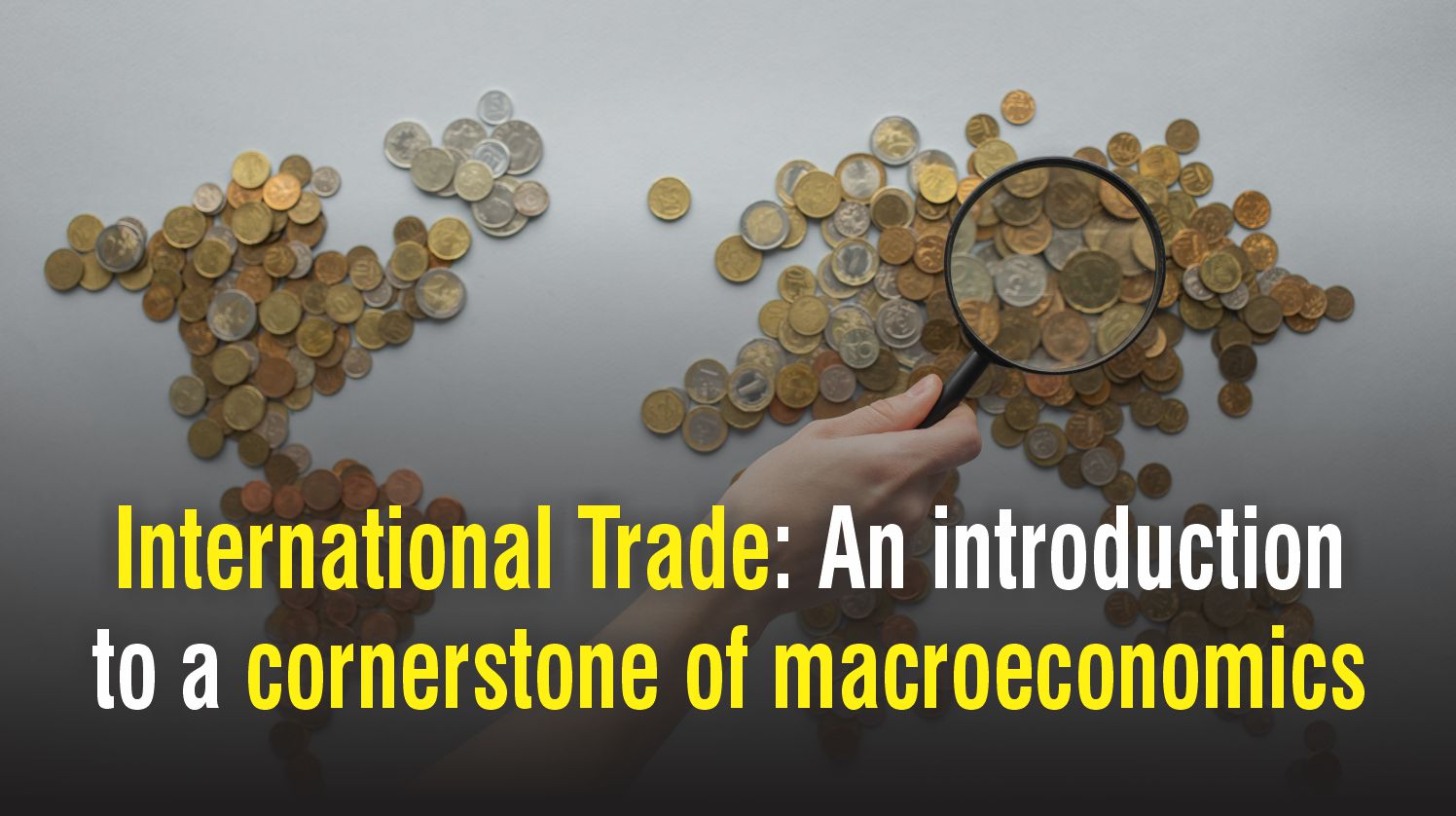Home
-
Blogs on Financial Literacy and Economics
-
International Trade: An Introduction to a Cornerstone of Macroeconomics

International Trade: An Introduction to a Cornerstone of Macroeconomics
by Vibrant Publishers
Selling and buying goods and services often are not restricted within the boundaries of a country. Countries trade across borders.
Why do countries trade internationally?
Countries trade because not all the resources are available in all parts of the globe. Good quality kiwis may be available in New Zealand and not in India. Therefore, if Indian men, women and children want to enjoy kiwi, they need to import it.
Again, not all countries are equally competent in manufacturing each and every good. China can produce garments at a much less price than France can. Hence, French people can save money when they import clothes from China.
Benefits of International Trade
International trade can make the world more prosperous. The exchange of goods enables countries to maintain better relationships. It is said that trade is the best mechanism to prevent war. Countries having strong trade relationships are unlikely to enter into a war. Globalization opens up economies worldwide. It helps in reducing the cost of production. Most of the modern economies are now part of a global value chain. A car finally assembled in the USA may have various components manufactured across the globe. Globalization can bring homogeneity in the lifestyle as well across the globe.
World Trade Organization (WTO) and Most Favoured Nation (MFN)
World Trade Organization was established in the year 1995 with the purpose of providing a better level playing field to countries across the world for international trade. It endeavors to ensure fair trade between countries. It intervenes to reduce friction between countries engaged in international trade. WTO members must offer all their fellow members the status of the most favored nation(s) under which countries cannot discriminate between member countries. If the USA levies a certain rate of tariff on Chinese goods, it is not expected to allow any preference for the same good produced in India or Bangladesh. However, the principle of MFN is often violated. Countries do discriminate between members with differential tariff and non-tariff barriers.
Anti Dumping
Another challenging situation is the dumping of goods. For capturing the market, countries are seen to sell goods at a lower price compared to the cost of manufacturing (Head to What is a Market in Economics? for more). Countries are ready to incur losses in the short term to gain market share in a country in the long term. To prevent this, countries are allowed to levy anti-dumping duty under WTO’s rule-based trade mechanism.
Trade Balance
Trade comprises exports and imports. A country may export its production of goods and services to other countries. The country also imports goods and services from other countries as per its need. A country often exports goods to a country more compared to the imports from the country. Similarly, the country will have more imports of goods from another country compared to exports to this country. When a country has more exports of merchandise goods to a country compared to imports, it is running a trade surplus. Again, when import from a country exceeds exports to the country, it is a situation of trade deficit. While calculating the trade balance, we consider only trade of goods and do not take into account invisibles or services. Some economies may have more imports than exports—for example, big economies like the USA and India. These countries run trade deficits. China mostly runs a trade surplus in aggregate. Often the deficit in the trade of goods is compensated by a surplus in services trade. Trade deficits may have several implications on economic conditions in various countries. An economy with a high level of trade surplus may have export-led growth. There can be job creation in the export-oriented sectors. It is natural for a country to have a surplus or deficit with some of its partners. A deficit indicates that domestic production is not enough for the consumption requirements in the country.
Balance of Payment
Balance of payment is a record of all possible transactions between residents of a country with the rest of the world. The possible transactions can be in goods, services, assets, payment of salaries, interest, etc. The transactions are for a specified time period, usually the financial year. The BOP has primarily two main accounts; the current account and the capital account. International Monetary Fund (IMF) has introduced a third component—namely financial account—as part of BOP.
Similar to other forms of accounting, in the case of BOP as well, each transaction is recorded with a plus or minus sign. When a transaction earns foreign currency for the country, it is termed as credit and recorded with a plus sign. When a transaction leads to spending foreign currency, it is a debit; the corresponding record has a negative sign. Usually, exports are considered as credit and imports are considered as debit. For a nation, exports earn foreign currency hence it is credit. In the case of imports, foreign currency is spent from the country; hence, the corresponding entry is a debit entry.
Balance of payment is vital for a country’s economic prosperity. It affects the forex reserve in the country. It is also a determinant of the exchange rate of the currency of the country.
Macroeconomics Essentials You Always Wanted To Know is brimming with information on foreign exchanges, trades, international organizations—like International Monetary Fund and World Trade Organization—and everything else you might need to get your macroeconomic fundamentals in check. The book is available for pre-order now.
Related Blogs -
5 Qualities of a Successful Entrepreneur
How Does Economics Explain Inflation?
Microeconomics is Essential For You!
Share












